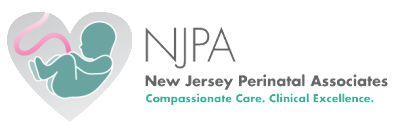COVID-19 Updates from New Jersey Perinatal Associates
Due to the unprecedented circumstances of the current COVID-19 global pandemic, New Jersey Perinatal Associates’ recommendations for ultrasound and antenatal testing follow-up are changing to limit patient contact and decrease the spread of disease. Our current guidelines are based on the recent AJOG article by Boelig, et al. (Boelig RC, Saccone G, Bellussi F, Berghella V, MFM Guidance for COVID-19, American Journal of Obstetrics & Gynecology MFM, 2020).
The frequency of follow-up growth ultrasounds will be decreased to every 6 weeks for conditions such as chronic hypertension requiring medication, pre-gestational diabetes, SLE, and renal disease. Conditions such as well controlled GDMA1, hypertension controlled without medication, single umbilical artery, abnormal placentation, thyroid disease, large leiomyomata, and others in which further decreased screening may be safely performed, will be seen for a single follow up growth ultrasound at 32-36 weeks.
Antenatal testing will be reserved for conditions at highest risk for fetal mortality and fetal movement counts should be emphasized between visits and for those not undergoing testing. Pre-gestational diabetes and GDMA2 will have once weekly testing beginning at 32 weeks. Patients with cholestasis are recommended to have weekly antenatal testing. For those with dichorionic twins, BMI >40, and maternal age >40, we will forgo weekly testing unless other co-morbidities exist. Patients should be advised that these modifications are advised due to the altered risk/benefit balance in the setting of the Coronavirus pandemic.
This move alone will decrease risk to our staff and the patients in our waiting areas by 50%. Visits will be kept as brief as possible for the safety of our patients and their families. Any patient with known or suspected COVID infection or exposure should never be sent to our office, as we do not have the proper PPE or negative pressure isolation rooms available to screen these patients.
Thank you for your understanding.
